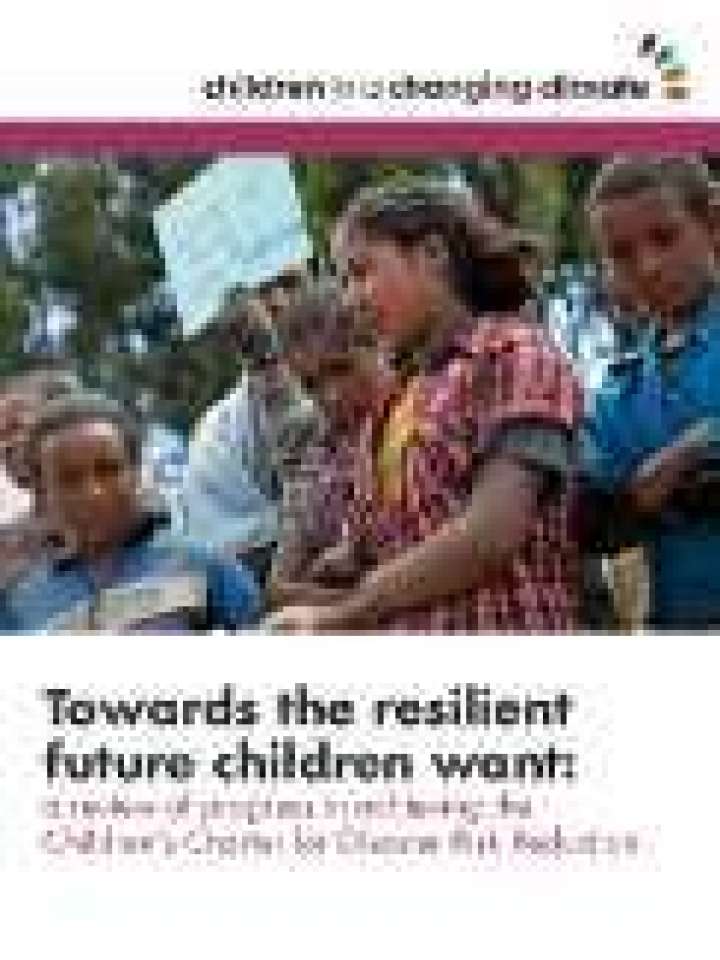Towards the resilient future children want: a review of progress in achieving the Children’s Charter for Disaster Risk Reduction
This report aims to respond to the question of how the five priorities for disaster risk reduction (DRR), identified by children from 21 hazard-prone countries in the Children’s Charter for DRR, can be achieved, exploring the enabling factors and challenges in implementing the Charter priorities. The priorities consists of: (i) safe schools; (ii) child protection; (iii) information and participation; (iv) safe community infrastructure and ‘building back better, safer and fairer’; and (v) reaching the most vulnerable.
The research report is structured as follows: Section two of the report explores in detail the implementation of the five Charter priorities at the ground level, including views from children, how to advance the priorities and the main challenges to achieving them. For each priority, two case studies are provided to demonstrate ways in which the priorities can be implemented at the local and national level. Section three of the report explores the common enabling factors for achieving the Charter priorities. Section four provides a brief conclusion of findings and offers recommendations for implementation of the Charter priorities in policy and practice. The lessons learned on how to advance DRR through the inclusion of children are of value for decision making on the post-2015 HFA agenda and the post-2015 Millennium Development Goals (MDGs).
The findings have been drawn from consultations carried out between August and December 2012 with 1,299 children (662 girls and 637 boys) in 17 countries, input from child-centred agencies’ offices in over 35 countries (that completed questionnaires, shared project documents and participated in interviews) and a desk study of materials related to child-centred DRR. This report is an output of the Children in a Changing Climate Coalition and has been supported by Plan International, Save the Children, UNICEF, UNISDR and World Vision.
